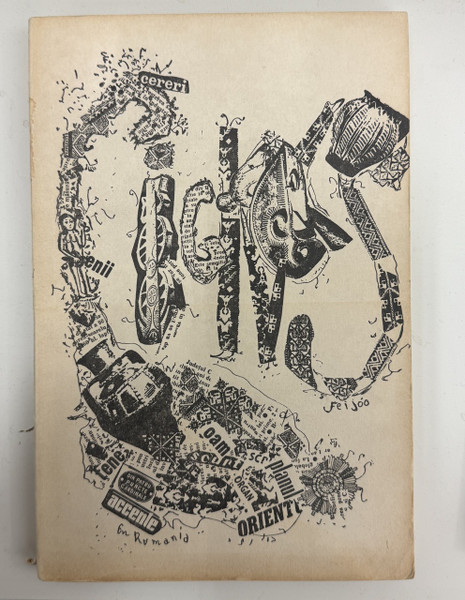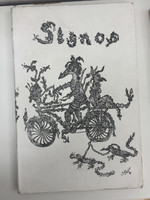- Travel
-
Exhibits
- La Portada Cubana
- Immortal Cuba: Artists Take on Their Heroes
- Seattle Poster Exhibit
- Sandra Dooley & Alejandrina Cué
- The Art of Wayacón
- Cuban Folk Art
- Cuba In Black And White
- 25 Years of Cuban Art Space
- Summer Folk Art Expo
- ¡SPRING AWAKENING FROM CUBA!
- Celebrating The Art Of Cuban Women
- Celebrating Paper, Affordable Art from Cuba
- Art of the Revolution
- Outsider Art
- Lost and Found
- En la lucha: Celebrating Cuban Women and Their Art
- Cuban Art Stash
- 100 Fires: 5 Cienfuegos Artists' Work on Paper
- Waya + Monte! Magic Realism in Cienfuegos
- Viva Cuba Viva! Poster Show
- Cultivando Sueños
- Black Lives Matter in Cuba Jan 9-March 27
- Leandro Soto: Crónicas visuales
- Cuban Canvas
-
Archive
- Global Reflection 2018: Spirit and Community
- Exhibit in the cloud: Contemporary Works on Paper
- MADE IN CUBA! MINNEAPOLIS EXHIBIT
- Cuban Posters and Photography from CCS collection
- AUTUMN SALE! Sept/Oct 2017
- SPRING ARTS AND CRAFT SALE
- Vuelo Directo/Non Stop: Alberto & Alejandro Lescay
- The Many Faces of Fidel
- Somos
- Made in Cuba!
- The US empire in Cuban graphics
- Made in Cuba/Seattle exhibit
- Entre Nos
- Looking Back
- Cuban Art Space
- Membership/Donate
- About Us
- Cuba News
-
Samuel Feijóo's extraordinary cover montage transforms the word "SIGNOS" into a visual manifesto of popular expression. Each letter becomes a container for intricate patterns, text fragments, and symbolic elements drawn from folk traditions—crosshatching, spirals, geometric designs, and layered typography including visible words like "CERE," "ORIENTE," "INCREÍBLE," and brand names that evoke everyday Cuban life. The collage aesthetic mirrors the journal's mission of documenting vernacular culture across graphic arts, musical notation (pentagrama), and written expression (letra). Feijóo's distinctive hand-drawn lettering style, combining folk art sensibility with modernist compositional principles, creates a democratic visual language that honors popular creativity while maintaining sophisticated artistic rigor.
"Signos: En la Expresión de los Pueblos" (Signs: In the Expression of Peoples) was one of revolutionary Cuba's most important cultural publications, directed by the polymathic artist, poet, and folklorist Samuel Feijóo. Published by the Consejo Nacional de Cultura, this second-year issue (September-December 1970) appeared during the "Año de los Diez Millones," marking Cuba's intensive sugar harvest campaign. The journal's subtitle—"Gráfica, Pentagrama, Letra" (Graphics, Musical Staff, Letter)—announced its comprehensive approach to documenting popular culture across multiple expressive forms. This special issue dedicated to Romania exemplifies Cuba's cultural exchanges with socialist nations, featuring contributions from Romanian artists including surrealist master Victor Brauner and folk artist Jules Peraghin.
The notice (Aviso) explains that following the journal's mission to present popular expression to both Cuban and foreign readers, this fourth issue celebrates Romania's industrious Socialist Republic. Assistance from Romania's Institute of Folklore and poets Darie Novaceanu and Florica Bonifaceu proved indispensable in assembling this collection of Romanian popular art and cultured expression. The comprehensive table of contents reveals the depth of Feijóo's curatorial vision: Romanian proverbs (refranes), drawings of proverbs by Jules Peraghin, riddles (adivinanzas), popular architecture, an essay on Romanian sheet music by Samuel Feijóo himself, the Brâncuși graphic series, material on national poet Tudor Archezi, three illustrators series, brief Romanian humor, popular songs (las doinas), contemporary Romanian poetry anthology, and a piece on Moldavia by Sadoveanu. The interior illustrations—including Peraghin's whimsical bird-woman striding over cityscapes and Brauner's abstract figures—demonstrate how Feijóo positioned Romanian folk and avant-garde traditions in dialogue, treating popular and elite culture as complementary expressions of national identity. This editorial philosophy reflected Feijóo's broader project of validating vernacular creativity within Cuba's revolutionary cultural framework.
-
-
Discover More at the Center for Cuban Studies







